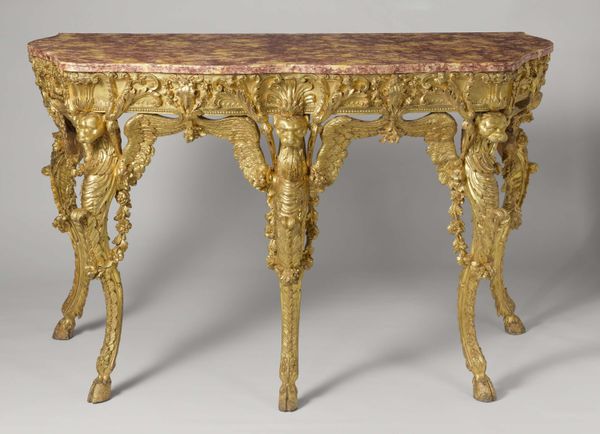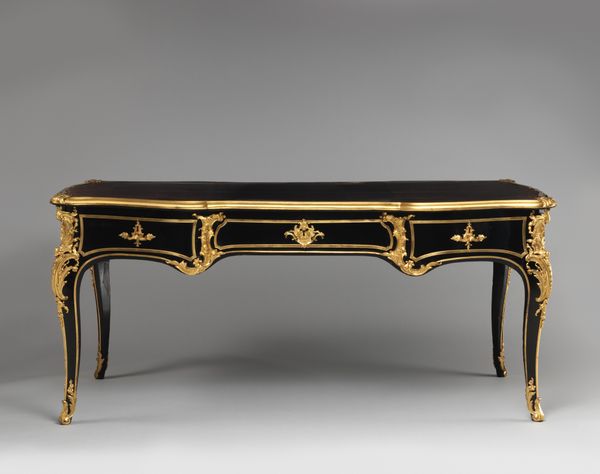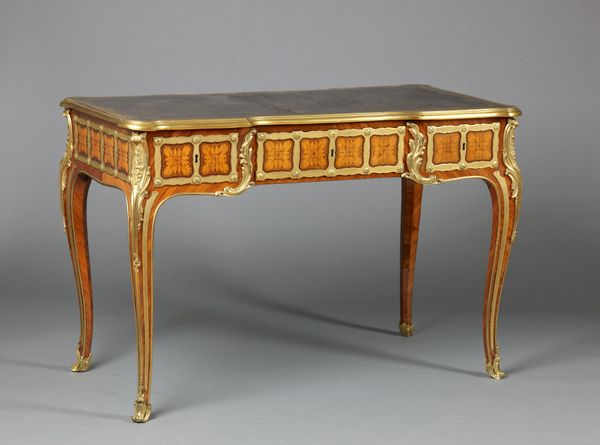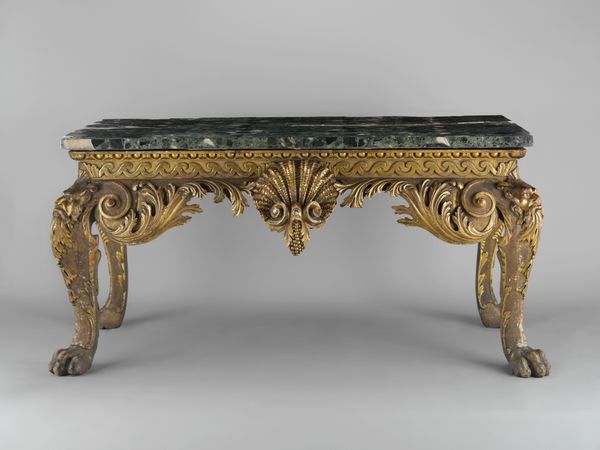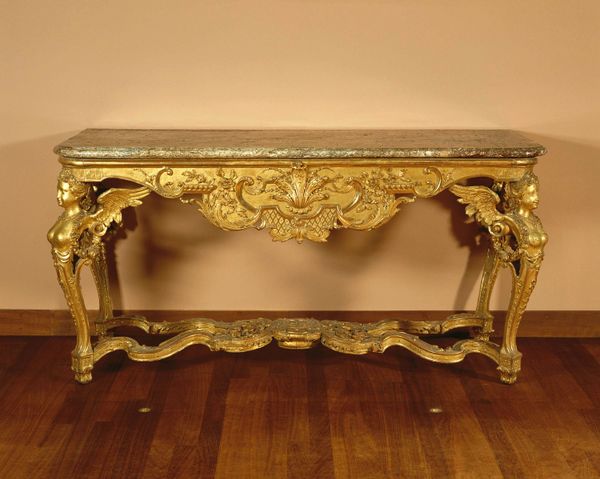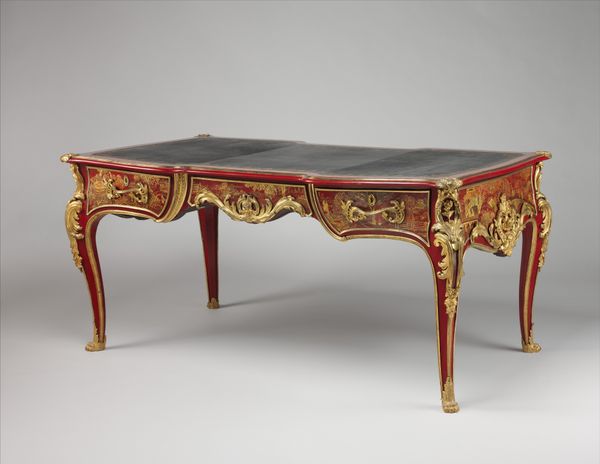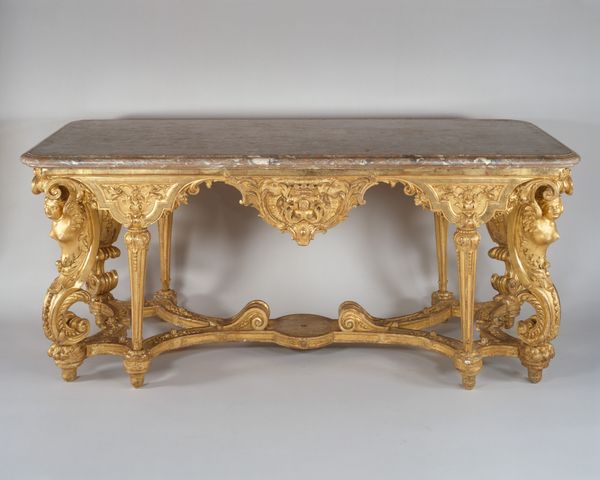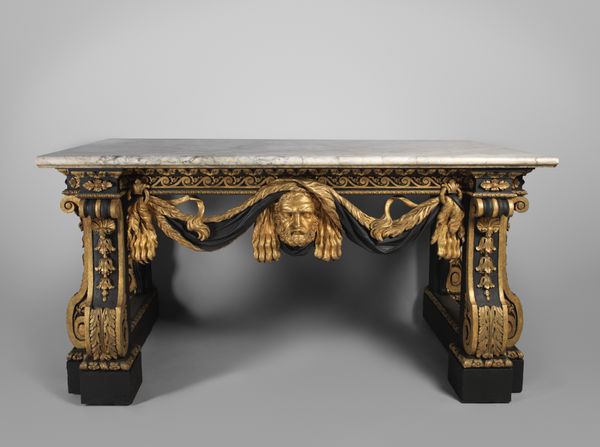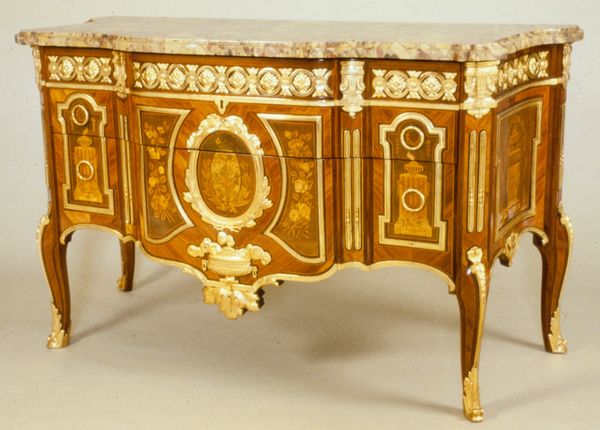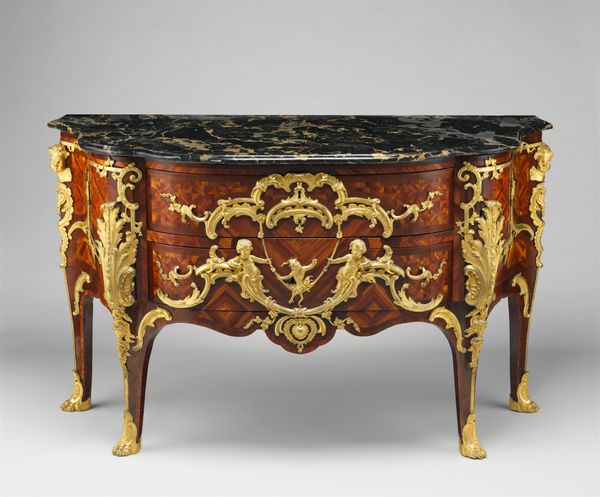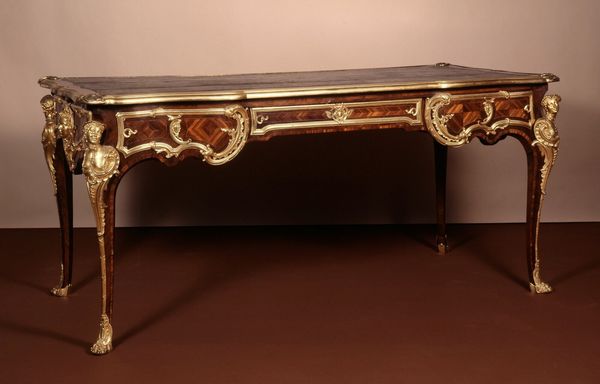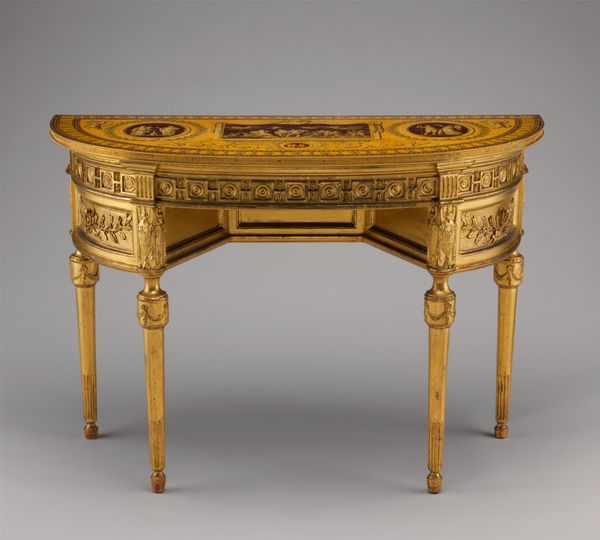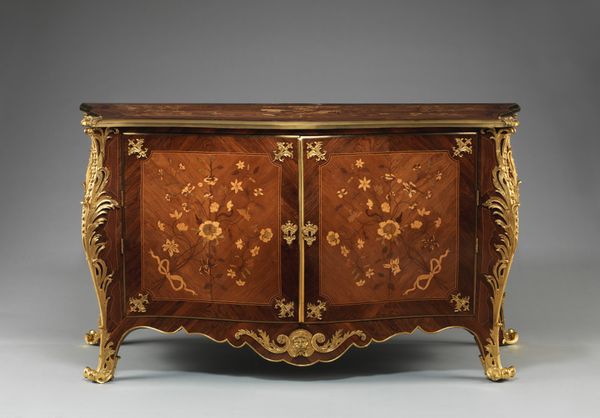
Dimensions: 35 1/2 x 59 x 29 1/4 in. (90.17 x 149.86 x 74.3 cm)
Copyright: Public Domain
Editor: This gilded pier table, made around 1768 by Giovanni Battista Piranesi, is quite stunning! The Baroque details are so elaborate, almost overwhelming. The combination of wood and marble creates a really decadent feel. How would you interpret its place in the history of art and culture? Curator: It’s essential to consider the pier table not just as a piece of furniture, but as a potent symbol of wealth and power in 18th-century Europe. Think about the aristocratic homes it would have graced. What statement do you think they were trying to make with such elaborate pieces? Editor: I imagine it was about showcasing their refined taste and status. Like saying, "Look at our wealth and sophistication!" Curator: Exactly! And Piranesi wasn’t merely creating furniture; he was crafting carefully designed environments reflecting classical antiquity but filtered through a distinctively Roman, baroque sensibility. Remember that the museum and gallery system was taking shape during this period, elevating artists to new heights, yet functional pieces like this played a critical role in visually manifesting and negotiating status. Does knowing this influence your interpretation of the table's artistic value? Editor: It definitely shifts my perspective. It's easy to see it just as a fancy table, but recognizing its function within the theatre of elite social life really underscores its cultural significance. It makes you think about who had access to this kind of art and who was excluded. Curator: Precisely. This pier table isn’t simply an aesthetic object; it’s a historical document, reflecting the complex social dynamics of its time. Consider how public institutions now exhibit and contextualize it - another chapter in its evolving story! Editor: That's a great point. I’ll definitely be thinking more about that interplay between art, power, and accessibility. Thanks for your insights!
Comments
minneapolisinstituteofart almost 2 years ago
⋮
This is one of the few pieces of Giovanni Piranesi’s furniture to survive. The versatile Piranesi was a printmaker, archaeologist, architect, and designer. His numerous etchings of Roman ruins contributed greatly to 18th-century Europe’s interest in the ancient world. In 1769 he published Diverse Manners of Ornamenting Chimneys and All Other Parts of Houses, a collection of imaginative designs for clocks, vases, chimneypieces, and even coaches. This table is one of a pair made for the Roman state apartments of a nephew of Pope Clement XIII. Piranesi drew from several ancient designs. He modeled the legs—carved like winged chimeras (mythological monsters, part lion, part goat)—after bronze tripods found at the ruined cities of Pompeii and Herculaneum. The ox skulls are based on Roman funerary motifs.
Join the conversation
Join millions of artists and users on Artera today and experience the ultimate creative platform.
